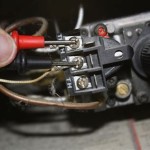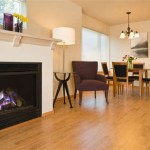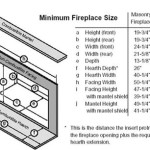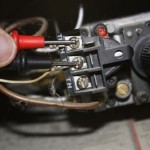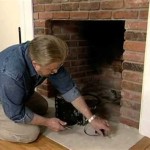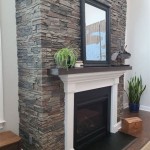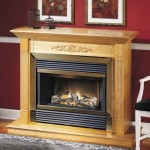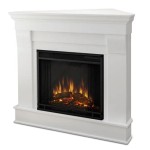Vented Gas Fireplace Inserts: A Comprehensive Overview
Vented gas fireplace inserts represent a popular heating solution for homeowners seeking to enhance the efficiency and aesthetics of existing masonry fireplaces. These inserts offer a cleaner, more controllable, and often more energy-efficient alternative to traditional wood-burning fireplaces while retaining the ambiance of a real fire. This article provides a detailed examination of vented gas fireplace inserts, exploring their features, benefits, installation considerations, and operational aspects.
A vented gas fireplace insert is essentially a self-contained heating appliance designed to fit within the opening of an existing fireplace. It operates by burning natural gas or propane and vents the resulting combustion gases directly to the outside through the existing chimney. Unlike vent-free or ventless gas fireplaces, vented models always require a functioning chimney or vent system for safe operation.
The primary purpose of a gas fireplace insert is to convert an inefficient open-hearth fireplace into a significantly more effective heating source. Traditional masonry fireplaces, while aesthetically pleasing, are notorious for drawing heated air out of the room and up the chimney, resulting in a net loss of heat. A vented gas insert, on the other hand, prevents this backdrafting and generates heat that is radiated into the room, supplementing the existing heating system.
Key Point 1: Components and Operation of a Vented Gas Fireplace Insert
A vented gas fireplace insert comprises several key components that work together to provide efficient and safe heating. Understanding these components is crucial for making informed decisions about selection, installation, and maintenance.
The burner is the heart of the gas fireplace insert. It's designed to mix natural gas or propane with air to create a controlled and efficient flame. Burners are typically constructed from stainless steel or other durable materials to withstand the high temperatures and corrosive byproducts of combustion. Different burner designs result in varying flame patterns and heat output. Some inserts feature dual burners for greater heat control and flame customization.
The gas valve is a crucial safety component that regulates the flow of gas to the burner. It is controlled by a thermostat or remote control, allowing the user to adjust the flame height and heat output. The gas valve also includes safety features, such as a pilot light or electronic ignition system, that prevent gas leaks and ensure safe operation. Thermocouples and thermopiles are common safety devices integrated with the gas valve to shut off the gas supply if the pilot light is extinguished.
A set of artificial logs, typically made from ceramic or refractory materials, is placed around the burner to create the visual appearance of a wood-burning fireplace. These logs are carefully crafted to resemble real wood, and they are designed to withstand the high temperatures generated by the burner. The arrangement of the logs affects the flame pattern and overall aesthetic appeal of the insert.
The firebox is the enclosed chamber that houses the burner, logs, and gas valve. It's constructed from heavy-gauge steel or cast iron and is designed to contain the heat and flames. The firebox is insulated to prevent heat loss and to protect the surrounding walls and materials from excessive temperatures.
The venting system is the critical component that safely exhausts combustion gases from the fireplace insert to the outside. Vented gas fireplace inserts require a functioning chimney or vent system that meets specific safety regulations. The vent system must be properly sized and installed to ensure adequate draft and prevent the buildup of carbon monoxide. The vent connector is the pipe that connects the firebox to the chimney.
The control panel or remote control allows the user to operate the gas fireplace insert. It typically includes controls for adjusting the flame height, turning the unit on and off, and setting the thermostat. Some models offer advanced features, such as programmable timers and zone heating capabilities.
Operationally, when the gas fireplace insert is activated, the gas valve opens, allowing gas to flow to the burner. The pilot light or electronic ignition system ignites the gas, creating a flame. The flame heats the logs and the firebox, radiating heat into the room. The combustion gases are drawn up the chimney or vent system and exhausted to the outside. The user can adjust the flame height and heat output using the control panel or remote control.
Key Point 2: Advantages of Vented Gas Fireplace Inserts
Vented gas fireplace inserts offer several advantages over traditional wood-burning fireplaces and vent-free gas fireplaces. These benefits include improved efficiency, convenience, safety, and environmental friendliness.
Vented gas fireplace inserts are significantly more energy-efficient than traditional wood-burning fireplaces. They typically have efficiency ratings of 70% or higher, meaning that a greater percentage of the fuel's energy is converted into usable heat. This is in contrast to traditional fireplaces, which can have efficiency ratings as low as 10% due to heat loss up the chimney. The increased efficiency of gas inserts translates into lower heating bills and reduced energy consumption.
Gas fireplace inserts are far more convenient to operate than wood-burning fireplaces. They eliminate the need to gather, store, and chop firewood. Starting a fire is as simple as flipping a switch or pressing a button on a remote control. The flame height and heat output can be easily adjusted to suit the user's preferences. There is no need to constantly tend to the fire or add more wood. Shutdown is equally simple and clean.
Vented gas fireplace inserts are generally safer than wood-burning fireplaces. They eliminate the risk of sparks and embers escaping the fireplace, which can cause fires. The enclosed firebox prevents direct contact with the flames. The gas valve and safety features prevent gas leaks and ensure safe operation. Vented systems also ensure that combustion gases are safely exhausted to the outside, reducing the risk of carbon monoxide poisoning.
Burning natural gas or propane produces fewer pollutants than burning wood. Wood-burning fireplaces release particulate matter, carbon monoxide, and other harmful emissions into the atmosphere. Gas fireplace inserts burn cleaner, reducing air pollution and improving indoor air quality. While they do create greenhouse gasses, they do so at a lower rate than older, less efficient wood burning options.
Vented gas fireplace inserts require less maintenance than wood-burning fireplaces. There is no need to clean up ashes or soot. The chimney should be inspected and cleaned periodically to ensure proper venting, but the frequency of cleaning is typically less than that required for wood-burning fireplaces. The burner and logs may need to be cleaned occasionally to remove dust and debris.
Finally, homeowners can often qualify for rebates or tax credits for installing energy-efficient gas fireplace inserts, further reducing the overall cost of ownership.
Key Point 3: Installation and Safety Considerations
Proper installation is critical for the safe and efficient operation of a vented gas fireplace insert. Installation should always be performed by a qualified technician who is familiar with local building codes and safety regulations. Addressing these considerations ahead of the actual install can prevent future problems.
Before installing a gas fireplace insert, it is essential to have the existing chimney inspected by a qualified chimney sweep. The chimney must be structurally sound and free of obstructions. Any necessary repairs or cleaning should be performed before the insert is installed. The existing chimney must be properly sized to accommodate the venting requirements of the gas fireplace insert.
The gas line must be properly sized and installed to provide an adequate supply of gas to the fireplace insert. A qualified plumber or gas fitter should perform the gas line connection. All gas connections must be leak-tested to ensure safety. The gas supply pressure must be within the specified range for the fireplace insert.
The venting system must be properly installed to ensure adequate draft and prevent the buildup of carbon monoxide. The vent connector must be properly sealed to prevent leaks. The venting system must meet all applicable building codes and safety regulations. The correct type of vent pipe must be used for the specific type of gas fireplace insert.
A carbon monoxide detector should be installed in the vicinity of the gas fireplace insert to provide early warning of carbon monoxide leaks. The detector should be tested regularly to ensure that it is functioning properly. Batteries should be replaced annually or as needed.
Regular maintenance is essential for the safe and efficient operation of a vented gas fireplace insert. The burner and logs should be cleaned periodically to remove dust and debris. The chimney should be inspected and cleaned regularly to ensure proper venting. The gas valve and safety features should be inspected annually by a qualified technician.
It's also important to keep combustible materials away from the fireplace insert. Maintain a safe distance between the fireplace and furniture, curtains, and other flammable items. Never store flammable liquids or materials near the fireplace. Supervise children and pets when the fireplace is in operation.
Finally, familiarize oneself with the insert's owner's manual and follow all instructions carefully. If any problems or concerns arise, contact a qualified technician for assistance. Do not attempt to repair the gas fireplace insert yourself unless you are a qualified technician.

Rushmore 30 Direct Vent Fireplace Insert Fine S Gas

Oakville Gdix4 Direct Vent Gas Fireplace Inset By Napoleon

Direct Vent Gas Fireplace Supreme Hearth

Freestanding High Efficiency Direct Vent Gas Fireplaces Inserts Stoves Godby Hearth And Home

Fireplaceinsert Com Kingsman Fireplace Insert Idv36

Superior Gas Fireplace Insert Dri3030c Contemporary

Top Direct Vent Gas Inserts In D C

Monessen Direct Vent Gas Fireplace Insert Reveal

Best Gas Fireplace Inserts Fireplaces Direct Learning Center

12 Types Of Gas Fireplaces You Need To Know
Related Posts

